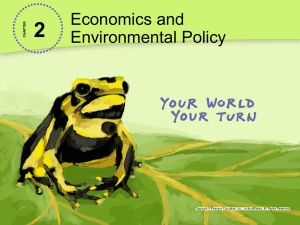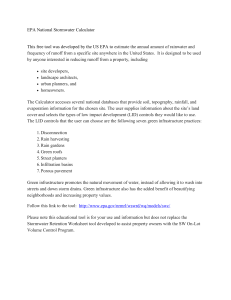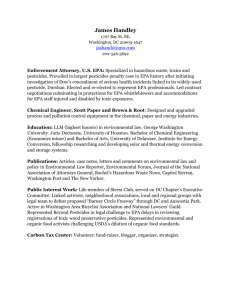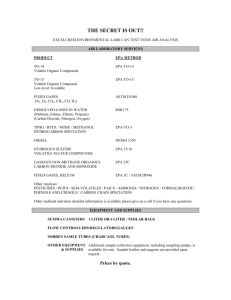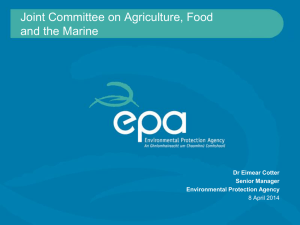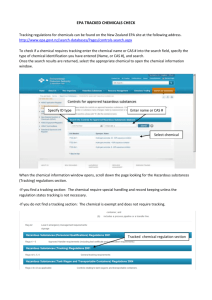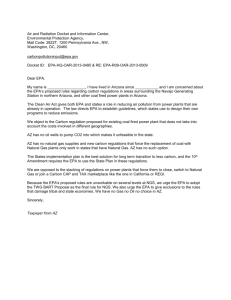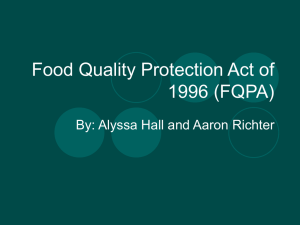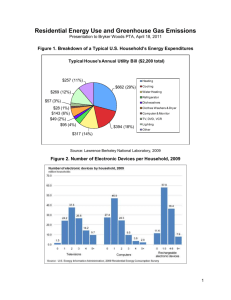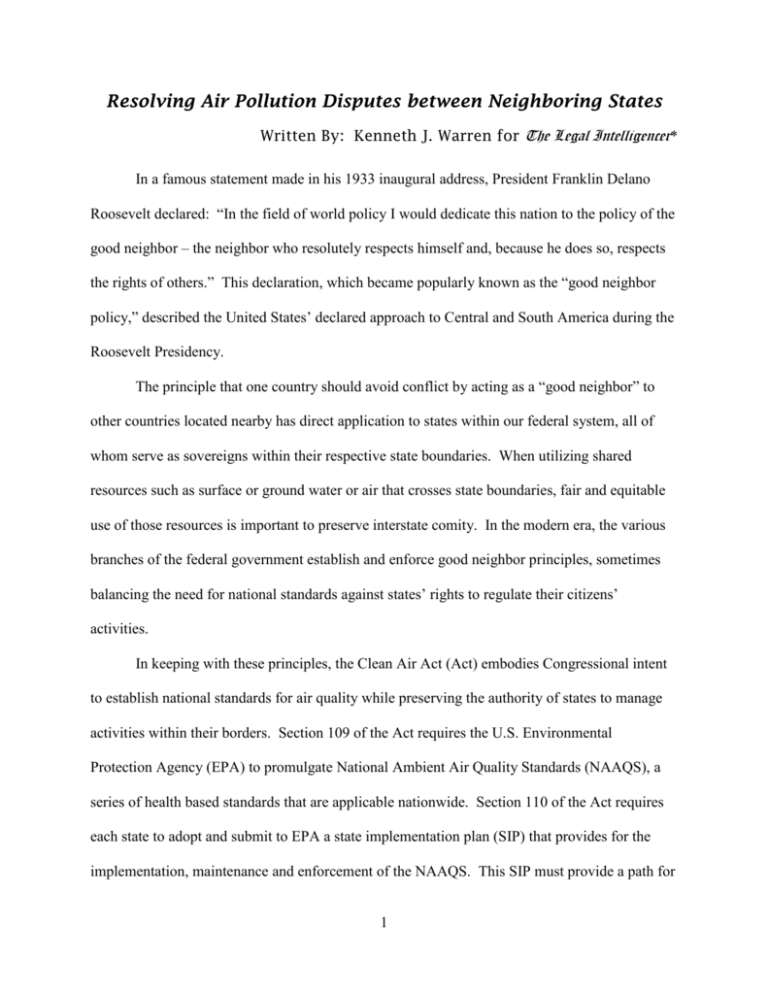
Resolving Air Pollution Disputes between Neighboring States
Written By: Kenneth J. Warren for The Legal Intelligencer*
In a famous statement made in his 1933 inaugural address, President Franklin Delano
Roosevelt declared: “In the field of world policy I would dedicate this nation to the policy of the
good neighbor – the neighbor who resolutely respects himself and, because he does so, respects
the rights of others.” This declaration, which became popularly known as the “good neighbor
policy,” described the United States’ declared approach to Central and South America during the
Roosevelt Presidency.
The principle that one country should avoid conflict by acting as a “good neighbor” to
other countries located nearby has direct application to states within our federal system, all of
whom serve as sovereigns within their respective state boundaries. When utilizing shared
resources such as surface or ground water or air that crosses state boundaries, fair and equitable
use of those resources is important to preserve interstate comity. In the modern era, the various
branches of the federal government establish and enforce good neighbor principles, sometimes
balancing the need for national standards against states’ rights to regulate their citizens’
activities.
In keeping with these principles, the Clean Air Act (Act) embodies Congressional intent
to establish national standards for air quality while preserving the authority of states to manage
activities within their borders. Section 109 of the Act requires the U.S. Environmental
Protection Agency (EPA) to promulgate National Ambient Air Quality Standards (NAAQS), a
series of health based standards that are applicable nationwide. Section 110 of the Act requires
each state to adopt and submit to EPA a state implementation plan (SIP) that provides for the
implementation, maintenance and enforcement of the NAAQS. This SIP must provide a path for
1
states to attain NAAQS when they are in violation of the standard and to prevent significant
deterioration of air quality when they are in compliance. Thus the federal government adopts
standards and the states implement them subject to EPA review. When EPA concludes that a
SIP is deficient, EPA may issue a federal implementation plan that is binding on the state.
The SIP requirements also address Congressional intent to prevent air emissions of
pollutants from sources in one state from adversely affecting air quality and human health in a
downwind state. Pursuant to Section 110(a)(2)(D)(i)(I), the SIP must contain adequate
provisions prohibiting emission sources within the state from emitting any air pollutant in
amounts which will “contribute significantly to nonattainment in, or interfere with maintenance
by, any other State with respect to any such [NAAQS].” Likewise, the SIP must prevent sources
within the state from interfering with the downwind state’s measures to prevent significant
deterioration of air quality or to protect visibility. Section 110(a)(2)(D)(i)(II). These subsections
are known as the “good neighbor” or “interstate transport” provision.
In Genon Rema, LLC v. EPA, No. 12-1022 (3d Cir. July 12, 2013), New Jersey alleged
that Pennsylvania violated the good neighbor provision by failing to limit sulfur dioxide (SO2)
emissions from the Portland Generating Station (Station) that prevented New Jersey from
attaining the 1-hour SO2 NAAQS. The Station is a coal-fired electric generating facility located
in Upper Mount Bethel Township, PA. The Station is situated near the Delaware River within
500 feet of Knowlton Township, NJ. The prevailing winds blow air pollutants from the
Pennsylvania side of the river to the New Jersey side. The rotten egg smell from the Station’s
emissions, the creation of acid rain, and the potential adverse health effects were of concern to
the Knowlton Township community and the State.
2
The New Jersey Department of Environmental Protection (NJDEP) seized upon EPA’s
new 1-hour SO2 standard effective August 23, 2010 as an opportunity to compel Genon to
implement stringent emission controls. On September 17, 2010, NJDEP filed a petition with
EPA under section 126 of the Act seeking an order limiting Genon’s sulfur dioxide emissions.
Section 126(b) provides a mechanism for a downwind state to seek a finding by EPA that a
source in an upwind state is emitting an air pollutant in violation of the good neighbor provision.
The petition alleged that Genon was in violation of the good neighbor provision because
sulfur dioxide emissions from its facility significantly contribute to the non-attainment of or
interfere with the maintenance of the 1-hour SO2 NAAQS in New Jersey. In support of its
petition, NJDEP submitted air quality and aerial dispersion modeling analyses showing that
concentrations of sulfur dioxide in several downwind counties in New Jersey exceed the new
NAAQS on account of emissions from the Station. The modeling traced changes in the
concentration of sulfur dioxide as it moved downwind from the Station and supported the
conclusion that the Station was a substantial contributor to NAAQS violations in New Jersey.
In response to the petition, EPA reviewed NJDEP’s modeling and performed its own
dispersion modeling using the American Meteorological Society/EPA Regulatory Model
(AERMOD) identified in EPA’s “Guideline on Air Quality Models.” EPA placed thousands of
receptors in New Jersey to quantify the Station’s contribution to New Jersey’s nonattainment of
the SO2 NAAQS. As a result of its data collection and modeling efforts, EPA concluded that the
Station’s emissions were sufficient on their own to cause downwind NAAQS violations.
To eliminate the Station’s significant contribution to nonattainment and its interference
with maintenance of the NAAQS, EPA published a proposed rule finding that the Station
violated the good neighbor provision. EPA proposed emissions limitations and compliance
3
schedules that require an approximately 81% reduction in sulfur dioxide emissions from the
Station over three years with interim reduction limits during the three-year period. Although
EPA did not mandate use of a particular control technology to achieve the emissions reductions,
it noted the options of switching to low sulfur coal with or without additional technologies, and
continuing to use high sulfur coal in combination with scrubbing. Upon finalization of the rule,
Genon promptly petitioned for review in the Third Circuit.
Genon’s challenge to EPA’s rule was principally based on its contention that EPA had
improperly usurped Pennsylvania’s authority under the Act. Section 110 of the Act provides
three years for states to modify their SIPs to implement newly promulgated standards such as the
new 1-hour SO2 NAAQS. This distribution of responsibility under the Act between EPA, which
establishes the NAAQS, and the States, which implement the NAAQS through SIPs approved by
EPA, is a form of cooperative federalism. In Genon’s view, this structure afforded EPA the
authority to establish NAAQS but conferred upon Pennsylvania the authority to decide how to
implement them. Consequently, in Genon’s view, the Act precluded EPA from entertaining a
petition under Section 126(b) until Pennsylvania adopted emissions limitations in its SIP or
failed to do so within the three-year statutory time period.
The Third Circuit rejected Genon’s interpretation, instead concluding that Section 126
provides an independent enforcement mechanism that does not require the downwind state to
await the results of the upwind state’s SIP process. Acknowledging that EPA’s review of a state
SIP revision was one route by which emission controls might be established, the court found the
Section 126 process to offer an alternative route. Citing to a decision by the Court of Appeals
for the District of Columbia in Appalachian Power Co. v. EPA, 249 F. 3d 1031 (D.C. Cir. 2001),
the Genon court noted that awaiting a SIP revision would eliminate Section 126’s requirement
4
that a source that EPA finds to be in violation of the good neighbor provision may not operate for
more than three years following EPA’s finding. In addition, unlike a SIP revision, Section 126
relief does not require any action by the upwind state. Finally, Section 126’s language
demonstrates Congressional intent for prompt action by mandating EPA to respond to a petition
within 60 days, a time frame inconsistent with a three-year SIP revision schedule.
Because the Third Circuit found the Act to unambiguously support EPA’s position, under
the rationale of Chevron it could have ended its analysis. The Genon court nonetheless chose to
examine whether EPA’s interpretation was reasonable. The court noted that the legislative
history of Section 126 evidenced Congressional intent to create an alternative method to prevent
and abate interstate pollution. Congress was concerned that absent this abatement provision,
states with more stringent control requirements would be placed at a disadvantage. Thus EPA’s
treatment of Section 126 as distinct from the SIP process was reasonable.
The Genon court also rejected Genon’s contention that EPA’s action was arbitrary and
capricious. EPA’s focus on a single source and its imposition of a compliance schedule for
reducing emissions were consistent with statutory language and a proper exercise of EPA’s
discretion. In addition, the modeling conducted by New Jersey and EPA’s own modeling results
showed the effects that limitations on the Station’s emissions would have on New Jersey’s ability
to attain the 1-hour SO2 NAAQS. EPA’s calculation of emissions reductions, the technical and
economic feasibility of achieving the emission limits and the imposition of interim limits were
all found to be well-supported.
EPA’s victory in the Genon case contrasts with its unsuccessful efforts to date to sustain
a nationwide program to protect downwind states from emissions from power plants located at
significant distances from the affected states. In EME Homer City Generation, L.P. v. EPA, 596
5
F. 3d 7 (D.C. Cir. 2012), cert. granted (U.S. June 24, 2013) (No. 12-1182), the D.C. Circuit
invalidated EPA’s Transport Rule (also known as the Cross-State Air Pollution Rule) on the
basis that EPA may not issue federal implementation plans before EPA quantifies the state’s
emission reduction under the good neighbor provision and affords the state time to amend its SIP
to meet this requirement. The EME Homer City court also held that EPA may not mandate
reductions of emissions by upwind states in excess of their contributions to nonattainment in
downwind states.
Because EPA based its decisions on different provisions of the Act, the rulings in Genon
and EME Homer City are not necessarily inconsistent. Indeed, the EME Homer City court
expressly distinguished its holding from the decision in Appalachian Power on the basis that a
federal implementation plan can be issued only after the state issues a SIP or the SIP deadline
passes, while a finding under Section 126 of the Act can be made at any time.
Both cases, however, relate to whether EPA may force sources in an upwind state to
reduce their emissions to protect downwind states without first affording the upwind state the
opportunity to modify its SIP. Genon was a particularly strong case for immediate imposition of
restrictions because it involved a single source in close proximity to the downwind state that was
shown through modeling to alone cause substantial interference with attainment and maintenance
of NAAQS in the downwind state. Genon may embolden downwind states and municipalities to
file more petitions asking EPA to control power plant emissions located in neighboring states.
The decision may also give EPA greater confidence that its AERMOD dispersion modeling will
withstand judicial scrutiny.
In contrast, EME Homer City involved many distant sources, some of which contributed
only 1% of the total interference with the downwind state’s compliance. Under these complex
6
circumstances, the court was sympathetic to the argument that EPA should establish emission
targets for the upwind states before imposing its own implementation plan. On review the
Supreme Court may clarify whether an upwind state’s obligation under Section 110’s SIP
requirements to be a good neighbor allows EPA to take prompt action even when a Section 126
petition has not been filed.
*Kenneth J. Warren is a founding partner of Warren Glass LLP and has been practicing
environmental law for more than 30 years. He is a former chair of the American Bar Association
Section of Environment, Energy, and Resources where he led the Section’s 10,000 members. He
can be reached at kwarren@warrenglasslaw.com.
Reprinted with permission from the August 9, 2013 edition of The Legal Intelligencer©2013
ALM Media Properties, LLC. All rights reserved. Further duplication without permission
is prohibited. For information, contact 877-257-3382, reprints@alm.com or visit
www.almreprints.com.
7

